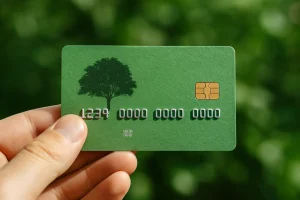Credit cards have revolutionized personal finance management, becoming an indispensable tool for consumers worldwide. They trace their roots back to the early 20th century, when the advent of credit systems started changing how people purchased goods. The United States played a pivotal role in transforming credit cards from a novel idea into an integral aspect of daily life.
For American consumers, credit cards represent more than mere financial tools; they are gateways to flexibility and financial empowerment. Their importance is reflected in the variety of offerings, from zero annual fee cards to rewards programs that deliver considerable value. In recent years, the rise of digital payments has further enhanced their utility, as technological innovations continue to shape the future of how we use credit daily.
The rise of credit cards and their evolution

The genesis of credit cards began with a simple notion: provide consumers an easy way to access credit and make cashless transactions. This concept took hold in the United States during the mid-20th century and rapidly gained popularity. As the economy expanded, so did the variety of cards, catering to diverse financial needs and lifestyles.
Today, credit cards are integral to the financial systems in many countries, facilitating international travel, online shopping, and digital transactions. They have become synonymous with convenience, and their growth reflects the increasing consumer demand for seamless, flexible payment options. The expansion of card offerings over the decades attests to their pivotal role in modern finance and underscores the importance of understanding their complexities and benefits.
Trends in credit card offerings
In a bid to attract a broader consumer base, banks and financial institutions are introducing cards with no annual fees. These cards offer value without the burden of recurring costs, making them attractive to budget-conscious users. Furthermore, the customizability of credit card benefits has become a focal point, with options like cashback, reward points, and travel miles drawing significant interest from consumers who seek tailored advantages.
Additionally, credit cards are increasingly integrated with digital wallets such as Apple Pay and Google Pay. This integration signifies a shift toward digital-first ecosystems, allowing for smoother, more secure transactions. By accommodating these payment systems, credit card issuers are meeting the evolving needs of tech-savvy users who prioritize convenience and security in their daily financial interactions.
Technological innovations in credit cards
Advanced security features have become a cornerstone of modern credit cards. Biometric authentication and embedded EMV chips are now standard, providing layers of protection against fraud. These technologies ensure that consumers can transact with confidence, knowing their data is safeguarded by the latest security measures.
Moreover, the application of artificial intelligence is revolutionizing personal finance management. Credit card issuers are leveraging AI to offer personalized insights, helping users track their spending and make informed financial decisions. This innovation not only enhances user experience but also fosters responsible financial habits, driving customer satisfaction and loyalty.
Sustainability in the credit card industry
As sustainability becomes a global priority, environmentally-friendly credit cards are emerging as a notable trend. These cards are designed with eco-conscious materials and encourage practices like carbon offsetting. By reducing their environmental footprint, credit card companies are appealing to the growing demographic of environmentally aware consumers who value sustainable choices.
Partnerships between financial institutions and eco-friendly organizations are furthering this trend. Banks collaborate with businesses committed to environmental responsibility, offering incentives to cardholders who support green initiatives. This alignment not only benefits the environment but also enhances the social responsibility profiles of the institutions involved, appealing to modern, conscientious consumers.
The impact of the pandemic on the credit card market
The COVID-19 pandemic has significantly influenced consumer behavior, accelerating the shift towards contactless payments. Credit cards equipped with near-field communication (NFC) technology became a staple during this period, offering a hygienic, touch-free alternative to traditional payment methods.
Simultaneously, the pandemic underscored the necessity for financial resilience, prompting many to reassess their credit strategies. Credit card companies responded by offering flexible payment plans and enhanced customer support, helping users navigate financial uncertainties.
The future outlook of credit cards
Looking ahead, the credit card industry is poised for further transformation. Experts predict an increase in interest rate transparency and enhanced user benefits as competition intensifies. This dynamic will likely lead to more consumer-friendly policies, giving cardholders greater control and awareness over their financial options.
Banks and credit card issuers are actively preparing for these changes by investing in technological advancements and expanding their offerings. As the market evolves, aligning products with customer expectations and embracing adaptability will be essential.
In summary, the credit card industry is at the forefront of financial innovation, driven by technological advancements, sustainable practices, and evolving consumer needs. As these trends reshape the market, consumers can benefit by staying informed and adapting to new opportunities, ensuring that they maximize the advantages offered by modern credit card solutions.
Ultimately, the future of credit cards lies in the harmonious integration of technology, sustainability, and consumer-centric benefits. By navigating these developments, individuals can enhance their financial well-being and remain ahead in an ever-changing economic environment.






